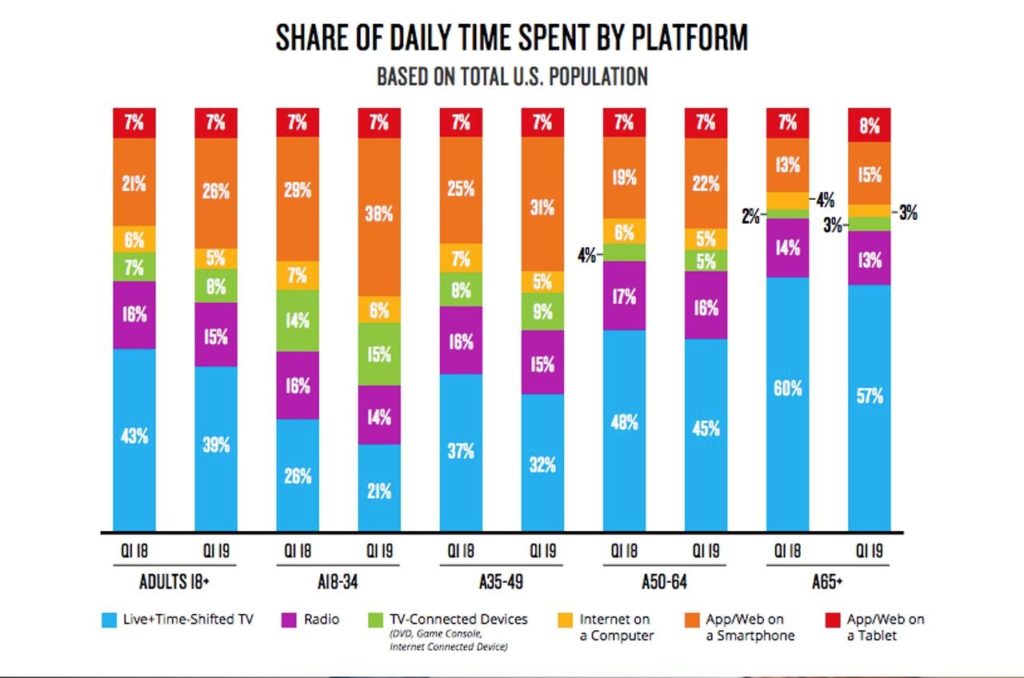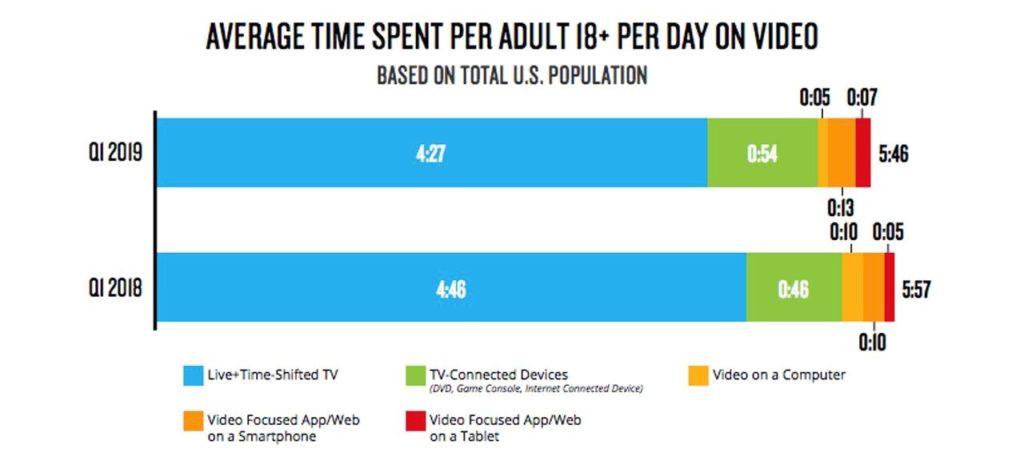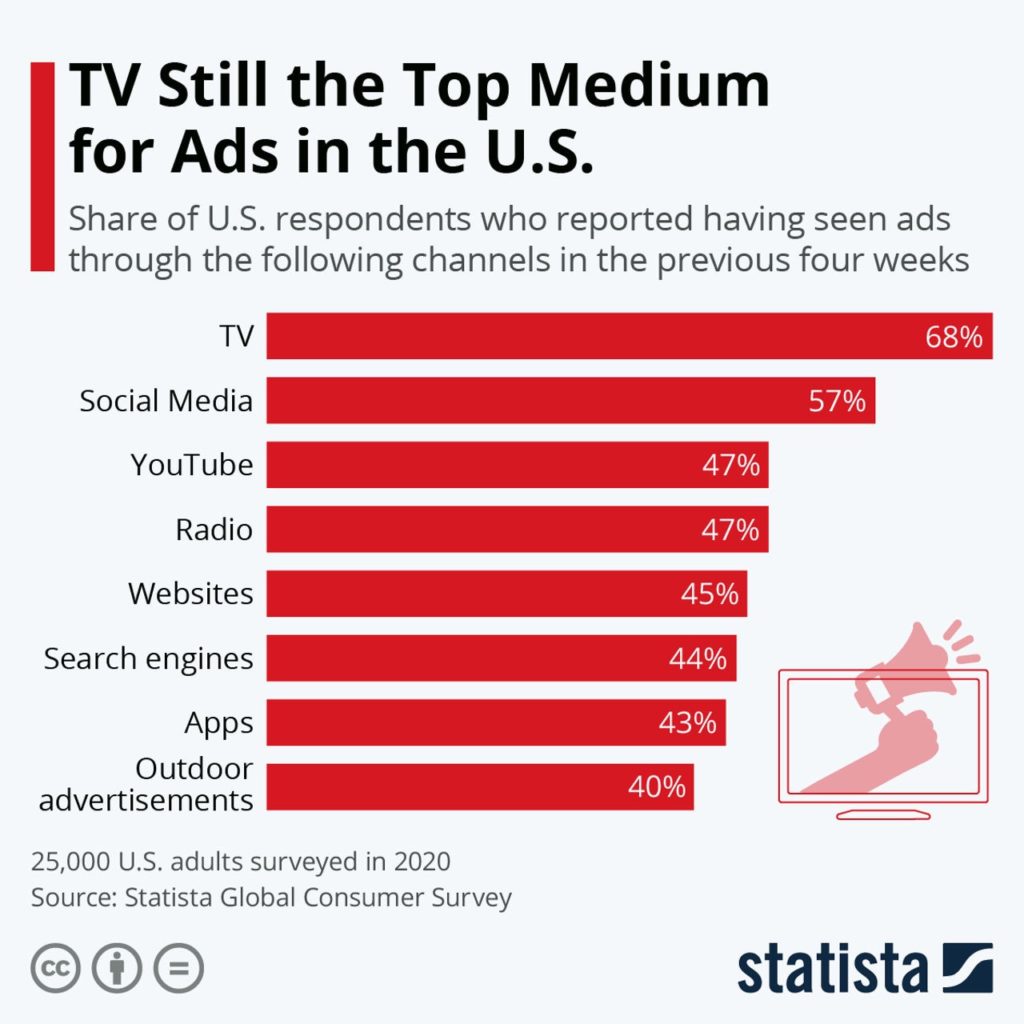Television is finally on its way out, and television advertising along with it. Or so they say.
Truth is, that has been said for a while now. The speculation started with the invention of time-shifted, on deme television back when Big Brother was still popular, and has been reignited in the last few years with increasing digital ad-spend and viewers shifting to streaming services. Still, like petrol cars or the Queen, the trusty old TVC just won’t seem to die.
“Like petrol cars or the Queen, the trusty old TVC just won’t seem to die.”
At this point it might be safer to assume that television advertising is immortal and, instead, ask; what, if anything, might its future look like? If television advertising were a human, it would probably be taking heart pills and transitioning to a diet of soft foods. This is at least the opinion of many who work in advertising. Endless is the list of opinion pieces about how the death of traditional advertising is nigh, an unsurprising view from an industry with a supposed ageism problem.
But the critics do have a point?
Digital ad-spend surpassed that of television in 2016, and that’s almost certainly not going to change back. Watching video on subscription-based platforms that don’t cater to advertising has become the norm for an increasing number of people. Brands even seem to prefer the transition to digital too, as they get far more data on where their money is going, with tools like impression metrics. All in all, it’s a tough time for television advertising. And yet, against all logic, television ad revenue is still growing. How can that be? To answer that, first let’s take a look at the numbers.
People watch more television than you’d think. A lot more. In the first quarter of 2019, US adults spent 39% of their daily media consumption on live and time-shifted television, compared to 38% on computer, smartphone, and tablet use combined. This is, of course, generational: in the 18-34 bracket those numbers are 21% and 51% respectively; in the 65+ group 57% and 26%.

Above: Share of daily time spent by platform, via Nielson.
Old people watch more TV than young people. Unsurprising. But that the average American still watches more traditional TV than phone, tablet, and computer usage combined? Well, that might surprise your usual type of young marketing professional, the type who probably hasn’t seen a television outside of a dentist waiting room since childhood, and therefore has shocking misconceptions of how the statistically average person consumes media.
The numbers get more extreme if we look at it sampled by video engagement. The average US adult spends four hours and 27 minutes watching television per day. Fifty-four minutes is spent on TV-connected devices (this includes streaming), and 25 minutes watching video on other devices collectively.
“You’ve got about as much chance selling incontinence nightwear on a Twitch stream as you do selling a VPN during midday M*A*S*H* reruns.”
That means that the average US adult is exposed to roughly 72 minutes of television advertising per day. So, perhaps the cord cutting apocalypse isn’t quite as close as we’ve been led to believe. No surprise then that TV is still the leading channel for self-reported advertising engagement – a metric that could hold more truth than its digitally reported twin.

Above: Average time spent per adult, 18+, per day on video, via Nielson.
But the numbers only tell one part of the story. In truth, the whole 'television advertising is dying because more money is being spent on digital' rhetoric was, likely, totally off to begin with. Did radio die because of television? No – they both have steady niches in the market. In the same way, television and digital are incomparable. So, let’s give it a go.
“Digital does the job of those "call in the next 10 minute" infomercials better than their creators ever could have imagined.”
The most obvious difference between the two is demographic: who is being sold to? You’ve got about as much chance selling incontinence nightwear on a Twitch stream as you do selling a VPN during midday M*A*S*H* reruns. Yes, there’s overlap. There’s teenage television and, well, Facebook, but the deciding factor in choosing between a TVC or digital campaign will be target audience.
More interesting, however, are the different roles that TV and digital play in terms of how their advertising functions. Television advertising is more about brand building than anything. A Budweiser spot isn’t placed in the middle of Sunday Night Football because they want you to leave your living room and head straight down to pick up a six-pack. It’s put there because the next time you’re staring blankly at the shelves deciding what six-pack to buy, you’ll choose the beer of the brand that showed you a funny ad while you were having a good time watching sport, rather than the dozens of others.

Above: TV is still the top medium for ads in the US, via Statista.
Digital advertising, on the other hand, acts more often as a sales funnel. That’s not to say it doesn’t also function as brand building, but that’s usually not the primary purpose. Digital does the job of those "call in the next 10 minute" infomercials better than their creators ever could have imagined. There’s a call to action, and just a few clicks away you can buy a product that will arrive at your door the next day. Perhaps your credit card information is even saved in your browser already.
“The 'skip this ad' button is responsible for the night terrors of digital marketers.”
That is, if your attention is grabbed in the first five seconds. Clicked with more determination than ‘refresh’ on the Glastonbury ticketing page, the 'skip this ad' button is both responsible for the night terrors of digital marketers, and a symbol of the inherent difference between TV and digital advertising.
It’s psychologically a very different thing to click a skip button – or to even mute an ad and switch tabs to the million other things at your fingertips – than it is to get up and walk out of a room during an ad break. If a TVC is at least mildly entertaining it’s a lot easier to sit through and wait for your show to resume than it is on the internet, where we’ve become accustomed to getting what we want without delay.
Many people on both ends of the advertising production chain don’t understand this and just assume that you can put something that was made for TV as a YouTube pre-roll and expect the same results, or vice-versa. This is how cost-cutting effectively becomes a wasted ad budget.
All this without even mentioning ad blockers, the Iron Dome of anti-digital advertising systems. But, to examine the full near-future impact of ad blockers would require its own article. An internet savvy person likely forgets that pre-rolls and sidebar ads even exist. That presents a real problem for marketers, who sometimes end up resorting to less ethical means of advertising to get their messages across.
Clearly the television vs. digital debate is an apples and oranges kind of situation. But if television – and television advertising along with it – is here to stay, what does its future hold?
The most likely scenario is something similar to radio. Viewership slowly but steadily decreases until it flat lines at some point, where it’s kept alive by virtue of having a particular niche. This process would likely happen over the course of a few generations, as the people for whom television was a household staple are outlived by those who grew up with streaming or whatever comes next.
“Television fills a particular need that we have to have things chosen or curated for us.”
Or perhaps everything goes full circle and the streaming giants are pressured by companies to include advertising (or just want to make more money) and the video streaming landscape of the next decade begins to look like on-demand TV does now. What is certain at this point is that television fills a particular need that we have to have things chosen or curated for us.
How often do you sit in front of your streaming service of choice, scrolling endlessly to find something before ending up back at the top picking the thing you thought about watching first? How long does that process take you? For the average person, according to the same Nielson report referenced above, it’s about 7.4 minutes.
“It’s one of the reasons people still listen to radio – too much choice is daunting.”
Television doesn’t have that problem. It’s one of the reasons people still listen to radio – too much choice is daunting, and when you want to switch off after a long day, having somebody choose for you is relaxing. The endless stream of stuff can be a comfort, and for some people even substitute as company, in a way that anything attempting to replace it couldn’t achieve. The TV was, after all, the hearth of the 20th century; a gentle log fire with ad breaks.
So, no, television is not about to die. It’s going to gradually decline in popularity and maybe even experience some ironic-until-serious resurgence, like vinyl. Anybody telling you otherwise is either severely misinformed or trying to push their digitally based product. Always check the footer. At The Moon Unit, we write and design the world’s best TVC treatments – but before you call us out on that, we do the same for film and streaming content. Our work has shown us that this isn’t a zero sum game – there’s room for all of these media to exist in harmony, and the growing popularity of one does not come at the expense of the rest.
Source: shots.net



